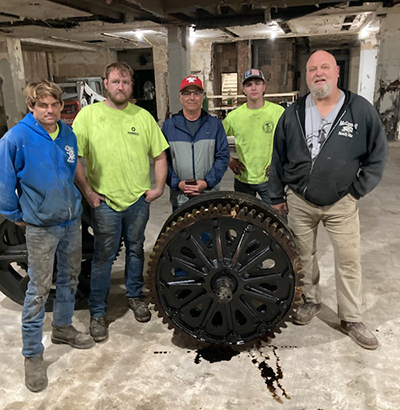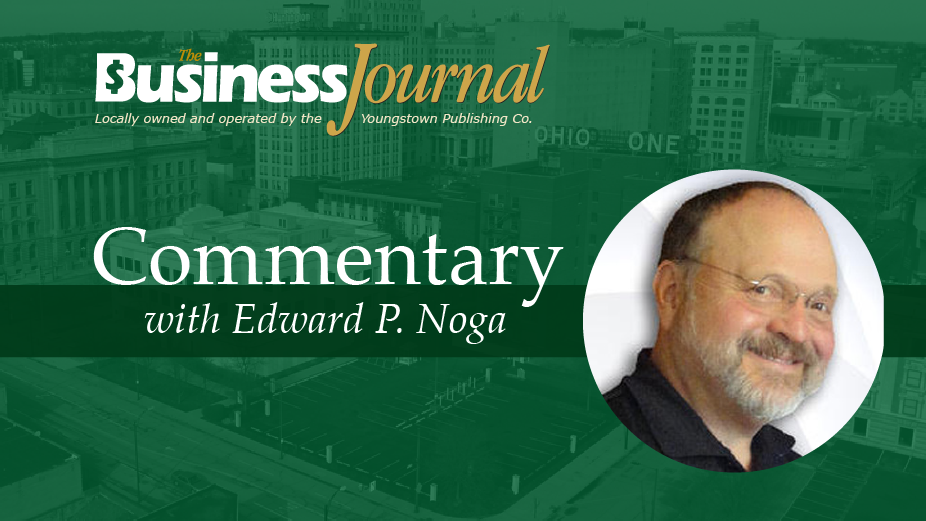By Edward P. Noga
YOUNGSTOWN, Ohio – How many times do we enter a building and head to the directory display to find the location and floor of the person or business we need to visit? We push the elevator button, wait briefly, enter, push the desired floor, and up we go. The process is reversed when we come back down.
In 1887, two German immigrants opened the Strouss-Hirschberg Co. on West Federal Street in downtown Youngstown. Downtown department stores popped up around the nation as a one-stop destination for shopping, dining and sometimes entertainment. “Let’s go downtown,” was a phrase often repeated in cities large and small.
In the mid-1960s, the song “Downtown” by Petula Clark melodically proclaimed: “Just listen to the music of the traffic in the city. Linger on the sidewalk where the neon signs are pretty.”
No matter where we live or what size town or city we grew up in, there is probably one department store we all remember because of its iconic role. Macy’s Thanksgiving Day parade, which began in 1924, is considered the world’s largest parade.

The picture on the right shows workers involved in the remediation and demolition of the interior of the former Strouss building. Like so many now closed downtown department stores, the building has joined the ranks of similar stores around our nation that have been or are being prepared for re-use and repurposing. In most cases, these historic structures are envisioned as mixed-use spaces. In city after city, these classic structures are monumental examples of a great history. Their preservation and reworking provide true anchors.
In Akron, the O’Neil and Polsky department store buildings are the subject of continuing repurposing for office, entertainment and education. In downtown Cleveland, the former Macy’s store has become an upscale apartment building with a huge atrium and fitness center for its residents.
Lima in western Ohio is bringing new life into its former Blattner department store site with new restaurants, bowling and arcade amusements and entertainment venues including a rooftop patio. Rudolph’s, a national snack chain company, is moving its IT and research divisions into the top floor of the building.
In all of these revitalization projects, one mainstay is counting on the “up and down” availability of elevators.
The photo above shows extra-large steel and brass wheels that were part of the mechanized cable system that allowed the elevators in Strouss to make their many trips. The two wheels are nearly 100 years old and were on the top floor that housed much of the mechanical, electrical, plumbing and draining equipment for the store.
I talked recently with Dan Terreri (Terreri & Sons is doing the work inside the building). He looked at the two huge wheels now on the ground floor and said, “These two wheels are industrial works of art!”
Dan said in the four generations that his family has run the company (It began in 1950), the Strouss project is the largest remediation and selective demolition project in its history.
Dan’s dad was a stonemason from Italy who came here and joined the armies of craftsmen and tradesmen who built our nation and steel industry. In the photo, the wheel is one of two drive gears that Westinghouse built for the freight elevators in the building.
Those who study trends in the United States can share many substantiated theories about how our cities and towns and villages have developed over the years. David Rusk made a lifelong study of the metropolitan areas of our country. In the mid-1990s, he visited the area and reminded us that preserving our history also preserves the true character and specialness of places we call home. That character of the past can be a vital part of moving forward as communities.
Going back to Petula Clark’s song, “Downtown,” she sings of the benefits of living together in core cities where all kinds of history, education, entertainment and life brings people together: “Things will be great when you’re downtown, No finer place for sure, downtown, Everything’s waiting for you.”
